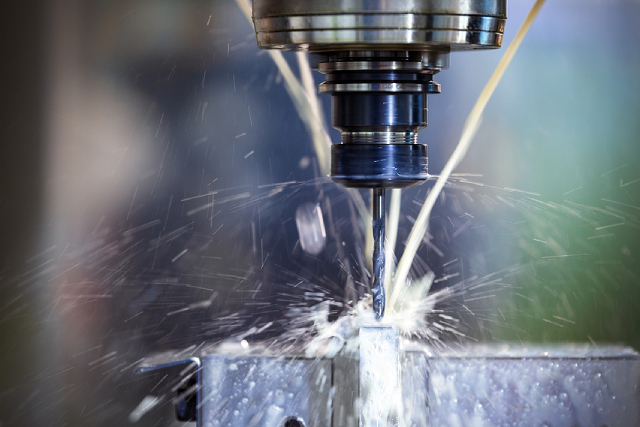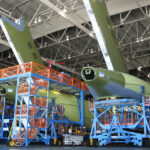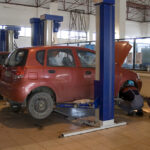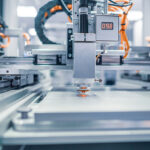When it comes to precision manufacturing, Computer Numerical Control (CNC) drilling stands out as a versatile and indispensable process. From creating holes of varying sizes and depths to intricate patterns with utmost accuracy, CNC drilling offers unmatched precision and efficiency. This guide explores the fundamentals of CNC drilling, its applications across industries, and the latest advancements shaping its future.
Understanding CNC Drilling
CNC drilling is a CNC machining process wherein a computer-controlled machine precisely removes material to create holes in a workpiece. Unlike conventional drilling methods that rely on manual operation, CNC drilling automates the entire process, producing consistent and repeatable results. The CNC machine interprets digital design data, typically in the form of Computer-Aided Design (CAD) files, and executes precise movements of the drilling tool according to predefined parameters.
Key Components of CNC Drilling
- CNC Machine: The CNC machine serves as the platform for executing drilling operations. It comprises various components such as the drill spindle, worktable, and control panel.
- Drill Bit: The drill bit is the cutting tool used to remove material and create holes in the workpiece. Drill bits come in various sizes, shapes, and materials, each suited for specific drilling applications.
- CNC Controller: The CNC controller is the brain of the machining system, responsible for interpreting digital instructions and translating them into precise movements of the drill bit. It ensures accuracy and consistency throughout the drilling process.
Applications of CNC Drilling
1. Manufacturing Industry
CNC drilling is widely used in manufacturing to create holes in metal, plastic, and composite materials. It is essential for fabricating components such as engine parts, chassis components, and structural elements.
Additionally, CNC drilling is critical for producing aircraft components with precise hole patterns for assembly and fastening in the aerospace industry.
Automotive manufacturers rely on CNC drilling to create holes in engine blocks, transmission components, and body panels, ensuring dimensional accuracy and alignment.
2. Construction and Architecture
In construction and architecture, CNC drilling is used for creating holes in structural elements such as beams, columns, and panels. It facilitates the installation of fixtures, fasteners, and utilities with precision.
CNC drilling is also employed in the fabrication of decorative elements, signage, and architectural features, allowing for intricate designs and patterns to be realized with ease.
3. Electronics and PCB Manufacturing
The electronics industry utilizes CNC drilling to create precise holes in printed circuit boards (PCBs) to accommodate electronic components and interconnections.
4. Medical and Dental Applications
In the medical and dental industry, CNC drilling plays a crucial role in the fabrication of surgical instruments, prosthetic components, and dental implants. As medical devices need to be highly precise and clean, CNC drilling is an invaluable tool.
Advantages of CNC Drilling
- Precision and Accuracy: CNC drilling offers unparalleled precision, ensuring that each hole is created with exact dimensions and alignment. This precision is essential for maintaining the integrity of the workpiece and achieving tight tolerances.
- Efficiency and Productivity: By automating the drilling process, CNC machines can operate continuously with minimal downtime, maximizing productivity and throughput. This efficiency translates to faster turnaround times and reduced manufacturing costs.
- Flexibility and Versatility: CNC drilling machines are capable of handling a wide range of materials, geometries, and hole sizes, making them highly versatile for diverse applications. From simple holes to complex patterns, CNC drilling offers unmatched flexibility in manufacturing.
- Consistency and Repeatability: With CNC drilling, each hole is created with consistent quality and repeatability, regardless of the operator’s skill level. This consistency ensures uniformity across batches and minimizes the risk of errors or defects.
Future Trends in CNC Drilling
- Integration of Automation and Robotics: The integration of automation technologies, such as robotic arms with CNC drilling machines, is poised to enhance efficiency and expand capabilities. Automated loading and unloading of workpieces and tool-changing operations will streamline production processes and reduce cycle times.
- Advanced Tooling and Materials: Continued advancements in drill bit materials and coatings will improve product quality, efficiency, and durability.
Conclusion
CNC drilling stands as a cornerstone of modern manufacturing, offering unmatched precision, efficiency, and versatility across a wide range of industries. From aerospace components to medical devices, its applications are diverse and indispensable. As technology continues to advance, the future of CNC drilling holds promise for even greater innovation and optimization, driving progress and shaping the manufacturing landscape for years to come.
Reach out to Monster Builder for all your CNC machining needs. We are also available for 3D printing and sheet metal fabrication services.






